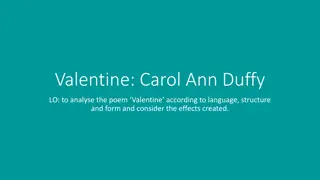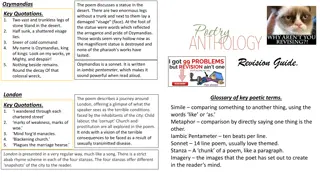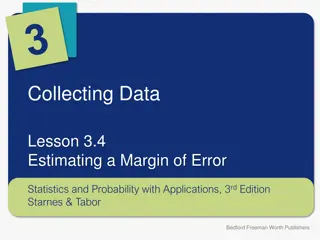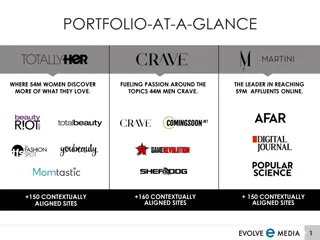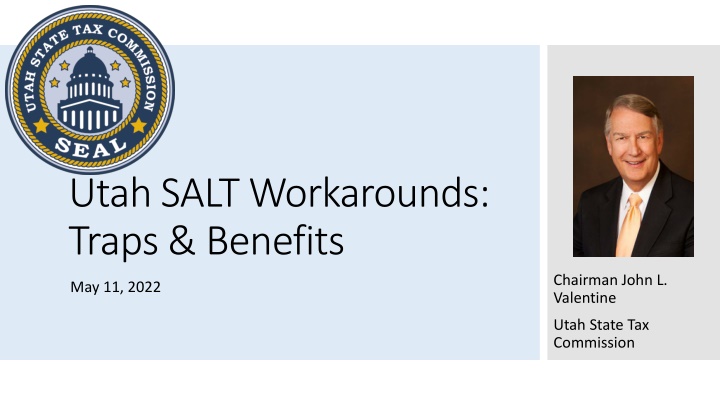
Utah SALT Workarounds, Traps, Benefits: Insights on Pass-Through Entities Taxation
Discover how Utah navigates SALT limitations through workarounds, including the taxation of Pass Through Entities (PTE) owners, federal deductions, and challenges faced. Learn about complex audit protocols, IRS notices, and tax treatments for various entity members.
Download Presentation

Please find below an Image/Link to download the presentation.
The content on the website is provided AS IS for your information and personal use only. It may not be sold, licensed, or shared on other websites without obtaining consent from the author. If you encounter any issues during the download, it is possible that the publisher has removed the file from their server.
You are allowed to download the files provided on this website for personal or commercial use, subject to the condition that they are used lawfully. All files are the property of their respective owners.
The content on the website is provided AS IS for your information and personal use only. It may not be sold, licensed, or shared on other websites without obtaining consent from the author.
E N D
Presentation Transcript
Utah SALT Workarounds: Traps & Benefits Chairman John L. Valentine May 11, 2022 Utah State Tax Commission
In 2006 and 2007 Utah extensively studied the issue of Pass Through Entities (PTE) taxation. HB 359 (2008) and SB 23 (2009) were passed to prevent pyramiding multiple layers of pass-through entities being used to improperly avoid taxation. Utah s prior treatment of PTEs The IRS and Treasury were studying the same issue and decided to adopt a complicated audit protocol of the top tier pass through entity, which would then be binding on all of the downstream entities. Utah imposed tax on the individual owners with mandatory withholding at the top-tier entity, thus avoiding the complexities of the federal approach. Credit for the withholding is then given to downstream owners.
Federal Congress limited the SALT deduction in the TCAJ in 2017. Subsequently, states have sought workarounds to the federal limitation. The first approach was to set up a state charity to receive contributions equal to the taxes, which was struck down by the IRS. SALT limitation The second approach was to attack the constitutionality of the limitation which was struck down by Second Circuit Court and denied cert. by the US Supreme Court.
IRS Notice 2020-75 became the basis for these workarounds: The tax is assessed at a specified rate, which is equal to the highest individual rate; The PTE deducts the entire amount of the state taxes paid when calculating its federal taxable income, ultimately reducing each owner s distributive share of income and avoiding the $10,000 limit at the individual level; Individual owners are provided with a credit equal to the owner s allocable share of state tax paid. The individual then uses the credit as a dollar-for dollar offset against their personal state tax liability. IRS 2020-75 The notice only gave an indication that regulations would be imposed in this area, but they have not yet been issued.
Utah taxed the owners and not the entities. Must all members agree in order to elect into this tax treatment? Will all members benefit from electing into the pass-through entity tax deduction at the entity level? If not, what members will have a detriment from such an election? When can an election be made or revoked? Can the entity make a retroactive election? Can it change its election from year to year? Some Utah challenges How is the taxable base calculated? Guaranteed payments and other allocations may also be included in the taxable base. How are tax-exempt members treated? How are foreign members treated? How are out of state members treated? Can corporate members receive a credit for tax paid? How does a pass-through entity treat net operating losses?
Utah adopted a SALT workaround substantially similar to some other states in line with IRS notice 2020-75. HB 444 Income Tax Revisions Retrospective for a taxable year beginning on or after January 1, 2022. Changes to Section 59-10-114 retrospective for a taxable year beginning on or after January 1, 2021. It authorizes a pass-through entity to pay a tax on behalf of pass- through entity taxpayers who are individuals. It then requires the individual to add the amount of tax paid to their individual tax return. The individual may then claim a nonrefundable income tax credit equal to the amount of the tax paid by the pass-through entity.
Individual adds amount of tax paid to PTE on individual income return PTE reports income attributed to individual and tax paid by the PTE Individual may claim a credit equal to the amount of tax paid by PTE PTE pays tax on behalf of individual Flow through example Credit may be claimed for taxes paid to another state by PTE if conditions are met
Entities that are affected Entities that aren t affected PTEs, including; Partnerships. Limited partnerships. Limited liability companies. Limited liability partnerships. S electing corporations. Trusts (could already pay tax on behalf of beneficiaries); However, if a trust is in a partnership, the partner cannot pay tax on behalf of the trust. Partnership between partnerships; However, a partnership that is a beneficiary of a trust can have taxes paid by the trust. C-corporations (even if the corporation is in a partnership).


